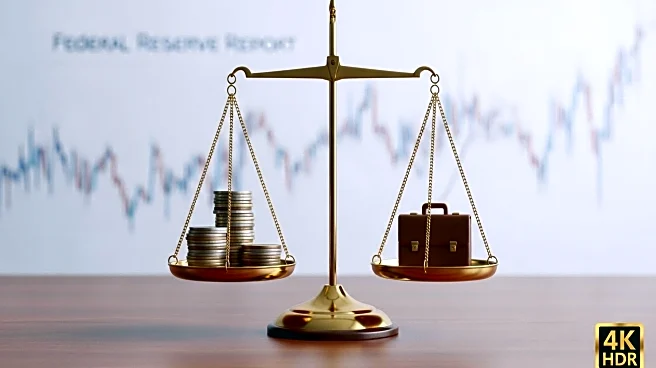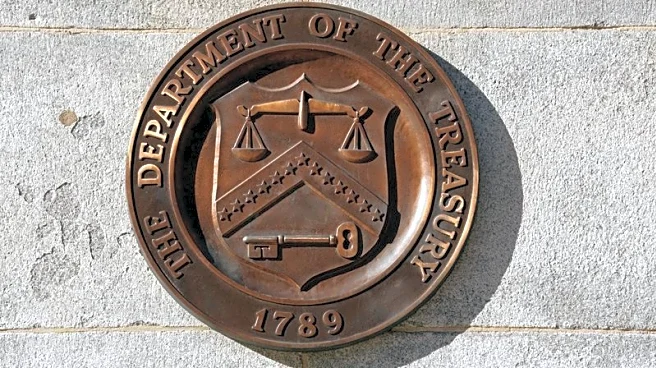What's Happening?
U.S. businesses are experiencing increased costs due to rising inflation at the wholesale level, driven by President Trump's tariff policies. The Producer Price Index (PPI) rose by 0.9% in July 2025, marking the fastest monthly increase since June 2022. This surge in producer prices is expected to eventually impact consumer prices, as businesses may pass on higher costs to consumers. The tariffs have particularly affected industrial goods, with pricing pressures spilling over into the service sector. The Dow and other major stock indices have reacted to these inflationary pressures, with fluctuations in market performance.
Why It's Important?
The rising costs for producers and manufacturers could lead to higher consumer prices, impacting household budgets and potentially slowing consumer spending. The tariffs' impact on industrial goods and services highlights the broader economic implications of trade policies. As businesses grapple with these challenges, there may be increased pressure on the Federal Reserve to adjust interest rates to manage inflation and support economic growth. The situation underscores the interconnectedness of trade policies, inflation, and monetary policy in shaping the U.S. economic landscape.
What's Next?
Businesses may continue to adjust their pricing strategies in response to ongoing tariff pressures. The Federal Reserve's upcoming decisions on interest rates will be closely watched, as policymakers weigh the need to address inflation against the backdrop of a slowing labor market. The potential for further economic uncertainty remains, as businesses and consumers navigate the evolving landscape of trade and inflation.













